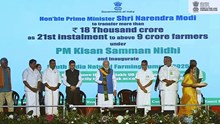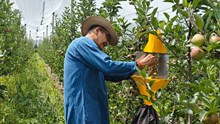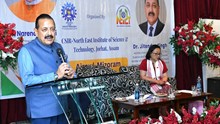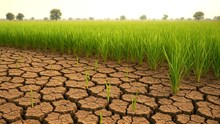
As Prayagraj prepares for the Mahakumbh 2025, the city is undergoing a significant environmental transformation. Utilizing the innovative Japanese Miyawaki technique, Prayagraj Municipal Corporation has created dense forests covering 56,000 square meters in just two years. These green spaces are intended to provide cleaner air and a healthier environment for the millions of devotees expected to attend this grand spiritual gathering.
What is Miyawaki Technique?
The Miyawaki technique, developed by Japanese botanist Akira Miyawaki in the 1970s, is a revolutionary method for creating dense forests in small spaces. Known as the "pot plantation method," it involves planting trees and shrubs close together, encouraging faster growth—up to 10 times quicker than traditional methods. This technique not only speeds up forest development but also improves soil quality, biodiversity, and ecological balance.
By mimicking the structure of natural forests with native species, Miyawaki plantations absorb more carbon dioxide, reduce air and water pollution, and prevent soil erosion. In urban areas, this method has been instrumental in transforming barren and polluted lands into thriving green ecosystems.
Under the guidance of Municipal Commissioner Chandra Mohan Garg, the Prayagraj Municipal Corporation has executed this ambitious project at over ten locations in the city. The largest forest, situated in the Naini industrial area, boasts 1.2 lakh trees of 63 different species. Another significant site, Baswar, once a massive garbage dumping yard, now hosts 27,000 trees across 27 species. These efforts have turned an eyesore into an oxygen bank, reducing industrial waste, air pollution, and foul odors.
Dr. N.B. Singh, a former botany professor at Allahabad Central University, highlights the environmental benefits of these dense forests. “Miyawaki forests help lower temperatures by 4 to 7 degrees Celsius, boost biodiversity, and provide natural habitats for birds and animals. They also mitigate the temperature fluctuations during summer and improve overall soil fertility,” he explains.
The species planted in these forests include a mix of fruit-bearing, medicinal, ornamental, and native trees. Mango, neem, mahua, peepal, tamarind, and amla share space with flowering plants like hibiscus and bougainvillea. Medicinal plants such as tulsi and brahmi, alongside fast-growing species like bamboo and drumstick, further enrich the ecosystem.
The Miyawaki forests in Prayagraj have significantly improved the city’s air quality and showcased how sustainable practices can restore urban environments. This initiative has led to benefits such as reduced air and water pollution, increased biodiversity, and enhanced ecological balance, setting a benchmark for other cities to follow.
















